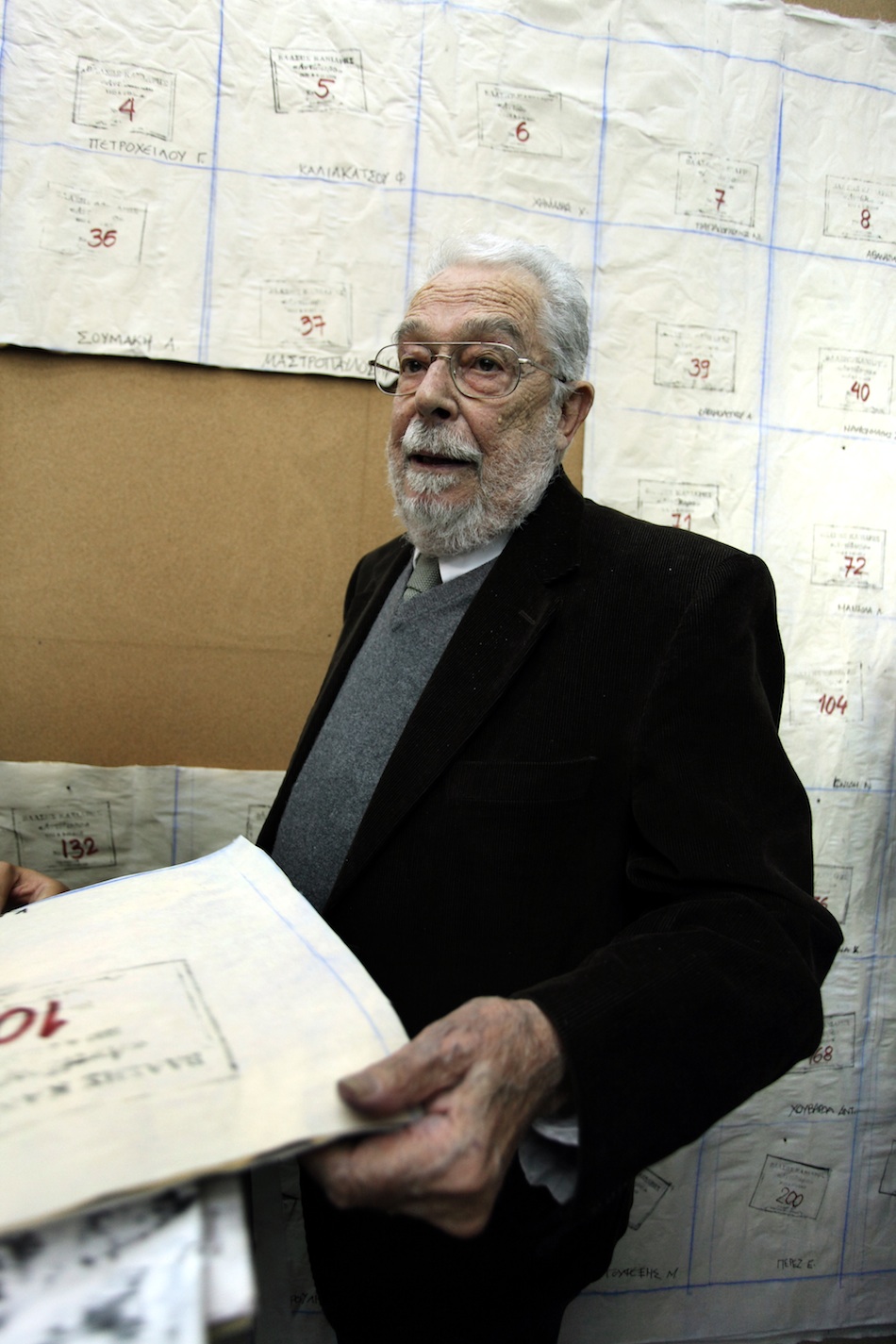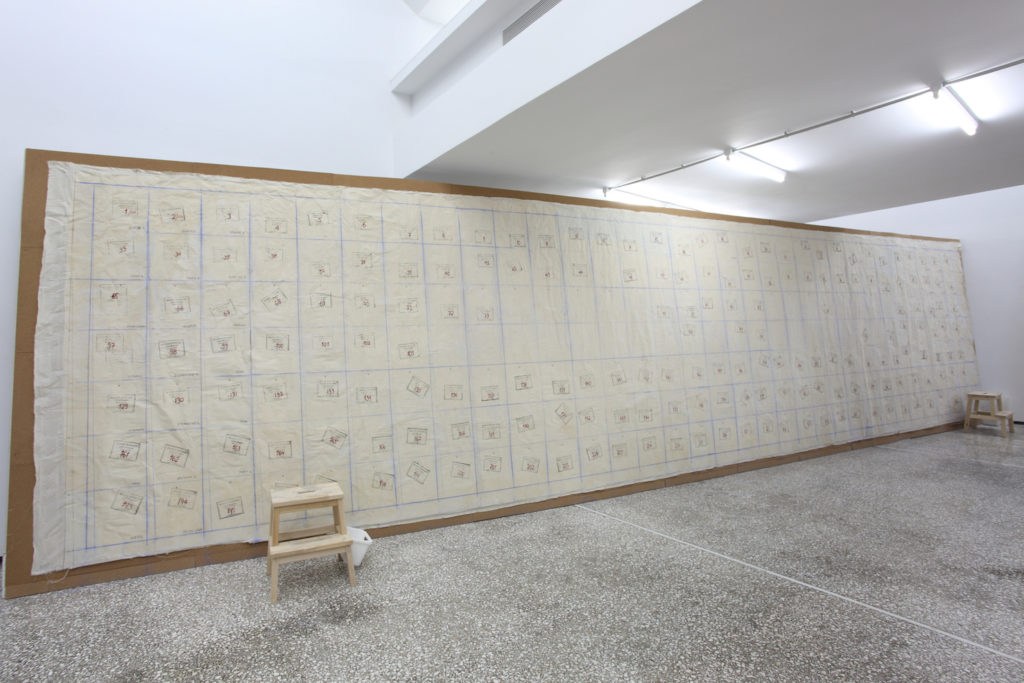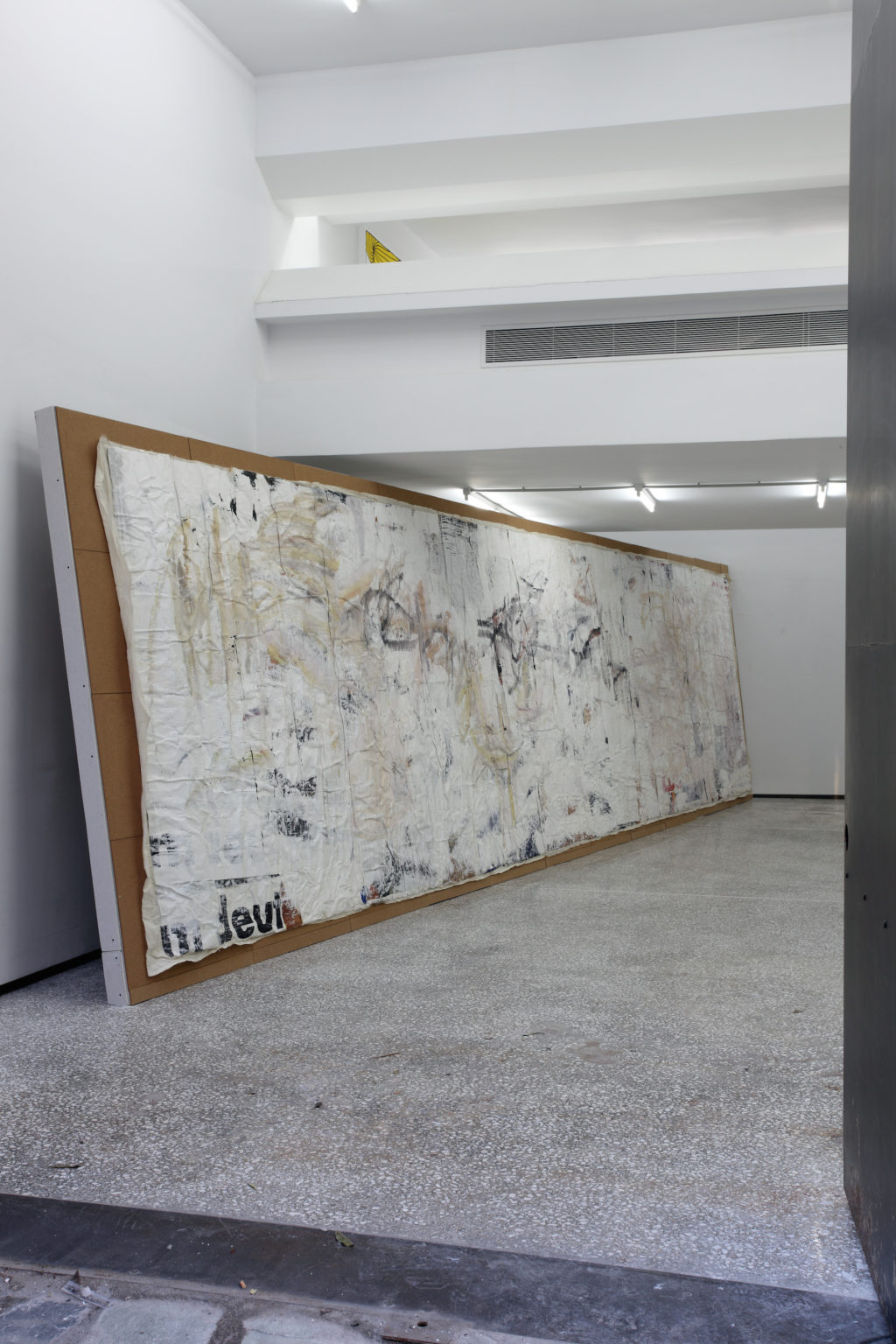Vlassis Caniaris
Antidoro
November 5, 2009–November 8, 2009The Breeder, Athens
Antidoro: A ritual by Vlassis Caniaris at The Breeder gallery
On Iasonos street, in the area of Metaxourgio, the red light district of Athens, Greece, among brothels and economic immigrants, Vlassis Caniaris will present an idiosyncratic performance-aktion on November 5th. Through this ritual, the artist aspires to deal with issues and questions that have troubled him throughout the last fifty years: “What constitutes a work of art, in which ways can someone trade art, through which process the audience experiences and appreciates art, how can participation and empathy be achieved, who profits from the artwork’s surplus value, how valuable can Duchamp and his work be today, how much of an artist is every single one of us on the inside”.
On the night of November 5th, when the crowd is getting thicker and thicker in the brothels of iasonos street and bodies are being offered as holy Bread (Antidoro) against 15 euros, Vlassis Caniaris will be offering to those in faith a large painting of his – a “wall” which dates back at the 1980s, 2,5×10 metres large, cut into pieces, the way Christ distributed the Bread and Wine on Holy Thursday.
The artist aspires to achieve the Communion-communication of his art. It’s really a play with words, since those two words sound alike but each one carries a different meaning. This play, though, is one of great significance since it allows meaningless images that surround and overwhelm us every single day to adopt a different essence.
Vlassis Caniaris has chosen for this ritual a huge “wall” made at the Museum am Ostwall in Dortmund on March 3rd, 1983 for the new version of his tableau vivant “Hélas-Hellas”. The original version was first presented in Athens at the Bernier- Fix center. On November 5th, this work (mixed media, collage, water color on paper) will be on show -on the reverse- at The Breeder gallery, so that none sees the actual work before it is cut into pieces. Each one of the pieces, 30×30 cm large, constitutes an individual work, with a stamp on the back stating the date of the performance and the artist’s name instead of the artist’s signature. Through this ritual, Vlassis Caniaris tries to share with the audience beliefs and behaviors in a most direct way.
In the Christian religion, the seven sacraments are offered to those who believe for free. In the same fashion, Caniaris’ work is offered for free to the assembled crowd. In this mystery or puzzle or the invisible work like the one painted by Frenhofer and described by Balzac in the “Chef-d’oeuvre inconnu”, the visual scheme of Barok is present. Exactly like the way it is dominant in Velasquez’s Las Meninas. In Las Meninas we observe the artist painting but we cannot see what is there on the canvas. The actual artwork remains untouchable from the unholy and violating eyes of the viewer. We have to imagine what is there to see. The Meninas put the issue of art clearly on a semantic basis by using the viewer’s vision in order to reach their consciousness. Isn’t it what Velasquez stated three and a half centuries before Caniaris, that the great piece of art can be viewed in so many other ways besides the vision? Or like Barthes put it, isn’t it that the realistic and descriptive image is at the same time vulgar because of its own transparency? Is it possible that the real pleasure can be found at the body of mystery? Since every meaning must be conquered through the physical experience? So that each form of art be considered not only communicative but by all means sensual?
8.10.09
Manos Stefanides






